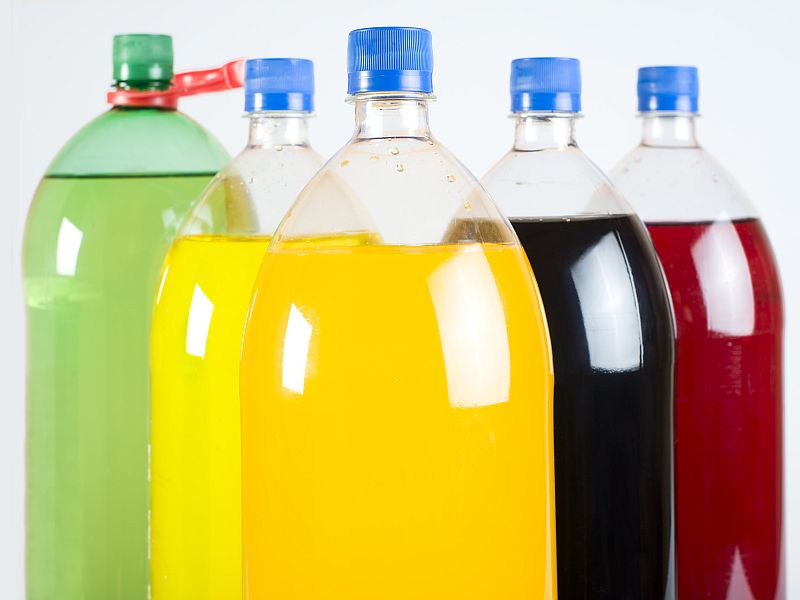SUNDAY, June 9, 2019 (HealthDay News) — Eight of every 10 American households buys sodas and other sugary drinks each week, adding up to 2,000 calories per household per week, new research shows.
To put that in perspective, 2,000 calories is equal to the recommended average caloric intake for an adult for an entire day.
With the obesity epidemic continuing for Americans young and old, it’s still tough to get the message out that sugary drinks may prove lethal over time, one expert said.
“It startles me how many patients of mine state that they ‘understand that soda is not good’ — however, they continue to drink for the pleasure principle,” said Sharon Zarabi. She directs the bariatric program at Lenox Hill Hospital in New York City.
However, Zarabi added, “when you actually sit down and spend time explaining the contribution of excess calories, inflammatory markers, elevated triglycerides, addictive properties, weight gain, etc., you paint a different picture.”
The new study was led by Stephen Onufrak, of the U.S. Centers for Disease Control and Prevention. The report — and a number of related studies — were to be presented Sunday at the annual meeting of the American Society for Nutrition, in Baltimore.
In the soda consumption study, the CDC team looked at data from a government survey of the weekly grocery-buying habits of nearly 5,000 U.S. households, compiled in 2012.
The findings showed that on any given week, 77% of households bought sodas, sweetened juices, sports drinks or other sugary beverages. In about half of cases (47%), these drinks were bought for consumption at home.
On average, households consumed more than 2,000 calories’ worth of sugary drinks each week — about 1,200 calories while at home and nearly 760 calories outside the home, the CDC team said. Sodas were by far the leading calorie source, with 678 calories’ worth consumed at home and another 472 calories taken in outside the home.
And as the number of people living in a home increased, so did the uptake of high-calorie, sugary drinks, the report found.
Healthy warnings
What can and should be done to help lower these numbers? Two innovations — bold health warnings on drink labels and “soda taxes” — do seem to help, other studies presented at the same meeting showed.
In one study, researchers led by Anna Grummon, of the University of North Carolina (UNC) at Chapel Hill, gave 400 soda-loving adults $10 and asked them to spend it in a mock convenience store.
One group of shoppers were sent to a store where the sodas had prominent health warnings emblazoned on their labels; while the other group went shopping in a store where sodas didn’t have such labeling.
The result? Folks sent to the “warning labels” store bought an average of about 110 calories’ worth of sugary beverages, compared to 143 calories among shoppers sent to the store without such warnings.
The researchers concluded that implementing policies that require sugar-sweetened beverages to carry health warnings could discourage sugar-sweetened beverage consumption.
In another study, Grummon’s group conducted a computer-simulation study on how putting health warnings on sugary beverage labels might affect the obesity epidemic. Her team estimated that such a move “could reduce average sugar-sweetened beverage intake by about 25 calories per day and total calorie intake by about 30 calories per day.”
Over five years, that would be “equivalent to losing about 4 pounds for the average adult,” the UNC team said.
Taxing calories away
Finally, there’s the notion — already legislated in Philadelphia, Berkeley, Calif., and other U.S. cities — of the “soda tax.”
In another computer-modeling study, a team led by Christina Griecci of Tufts University in Boston estimated that a 1 cent tax per ounce on every sugar-sweetened beverage could prevent around 17,000 new obesity-associated cancer cases and 10,000 cancer deaths.
The tax would also save an estimated $2.4 billion in lifetime expenditures for cancer care nationwide, Griecci’s group reported.
Another Tufts computer-modeling study, this time led by researcher Yujin Lee, found that a tax on sugar-sweetened beverages would work best if the amount of tax went up along with the amount of sugar added.
The researchers estimated that this kind of tiered tax “could prevent 460,000 cardiovascular events and 60,000 cases of diabetes, and save $28 billion in health care costs” over a decade.
Zarabi agreed that taxes and label warnings are what’s needed.
“Sodas have absolutely no nutritional value and imposing a tax may have people thinking twice about their health,” she said.
But another nutrition expert disagreed.
“The idea that sugar taxes will be the solution is not only short-sighted, but places the largest financial burden on low-income people, as well as discounts the multifaceted reasons for our poor eating behaviors,” said registered dietitian Michelle Milgrim, who manages employee wellness at Northwell Health in Lake Success, N.Y.
“Stress, emotions, family and cultural influences, cost and convenience are among just some of the reasons why people eat the way they do,” Milgrim believes. So, better food labeling, plus education on nutrition that is “early and ongoing” are the real keys to solving the obesity problem, she said.
Because all of these studies were presented at a medical meeting, their findings should be considered preliminary until published in a peer-reviewed journal.
More information
The American Heart Association has advice on cutting dietary sugar.
Copyright © 2025 HealthDay. All rights reserved.

